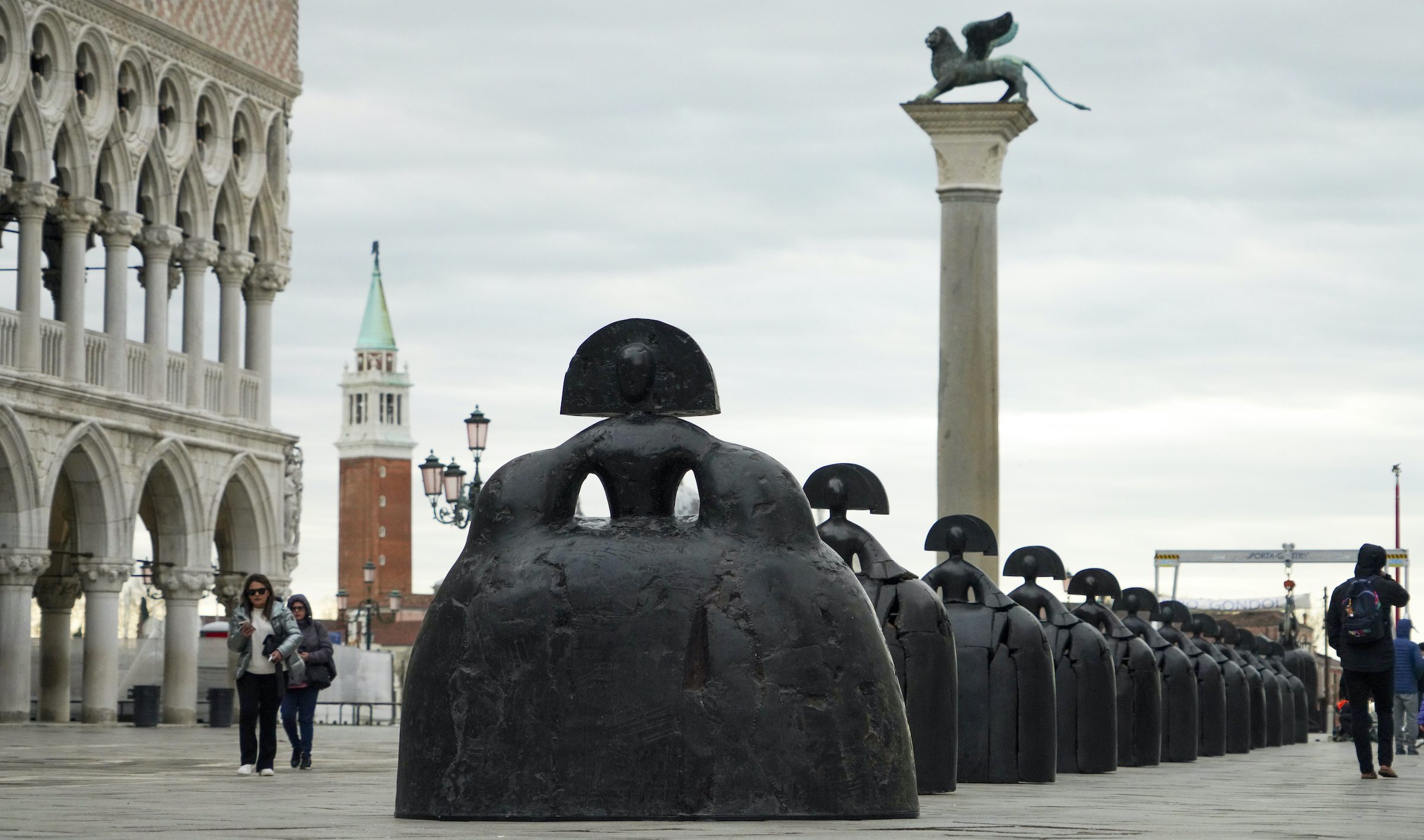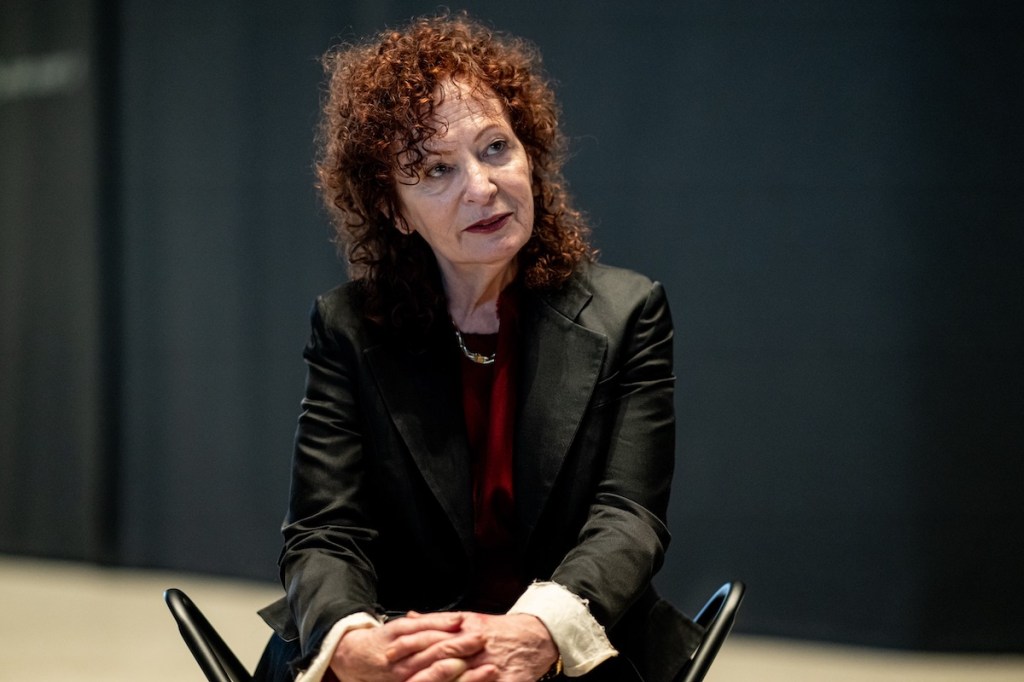An exhibition of sculptures installed in various public sites around Venice for the upcoming Biennale is garnering criticism from local community members, who argue that the display distracts from the city’s existing cultural heritage in need of restoration and preservation.
Comprising 15 contemporary works by Spanish artist Manolo Valdés, Las Meninas a San Marco (2024) was organized by Galleria D’Arte Contini in collaboration with the Municipality of Venice; the city’s Superintendent of Archaeology, Fine Arts and Landscape; and Vela S.p.A., a subordinate company of Venice’s city council involved in the organization of major public events including the Venice Boat Show and Carnevale.
The exhibition doesn’t officially open until Friday, when the works will be officially inaugurated with Valdés at a ceremony in the city’s historic public square Piazza San Marco, where his row of 13 bronze sculptures — a dozen “Reina Mariana” works and one massive “Infanta Margherita” — emulating Diego Velázquez’s painting “Las Meninas” (1656) were placed last week. But within hours of their installation, the artworks were criticized by the local heritage group Italia Nostra for their contribution to what it calls the “biennalization” of Venice.
“Should we be happy about this flourishing of art exhibitions and not just temporary ones (with entire buildings being handed over to collectors)? The refrain is always the same: It’s better than the buildings falling into ruin,” the community organization said in a Facebook post dated March 28, tagging two pictures of Valdés’s installation.
The city has been dealing with degradation of its buildings and infrastructure due to the combined impact of mass tourism, continuing development, and climate change. In 2023, UNESCO recommended putting the city on its heritage danger list.
“We turn a blind eye to the consequences of this extreme ‘biennialization’ of the city,” the organization’s statement continued. “Functions for citizens disappear and consequently citizens disappear. And the city disappears.”
In addition to the line of bronze sculptures, there are also two large-scale chromatic works on view nearby: “Mariposas” (2024), located on Riva Ca’ di Dio bordering the Venetian Lagoon, and “Diadema” (2024) in the Venetian Arsenal, which serves as a central exhibition site for the Biennale. The installations will remain on view until June 15.
“The feedback received has been mainly positive, obviously, there is some jealousy here and there, but this is also the beauty of the art world,” Riccarda Grasselli Contini of Galleria D’Arte Contini told Hyperallergic in regard to the exhibition’s public reception.

The gallery engaged in an extensive process to obtain all the necessary permits for the installation, which were “issued directly” from the Municipality of Venice and the National Trust of the Cultural Heritage, Contini explained. At the end of the exhibition, one of the dozen “Reina Mariana” sculptures will be donated to the Municipality of Venice, and city officials will then decide where it should be permanently placed.
“Venice is an ancient city, but at the same time a contemporary one, so the contrast and the juxtaposition between its strength and long history, together with contemporary art is valid and important to have,” Contini added.
Hyperallergic has reached out to the Municipality of Venice, Manolo Valdés, and Italia Nostra for comment.










